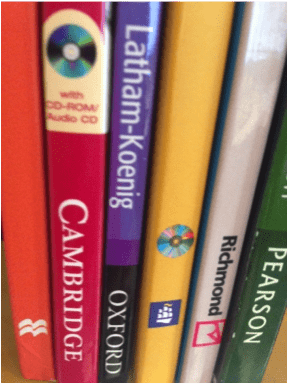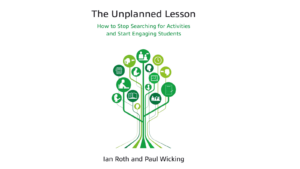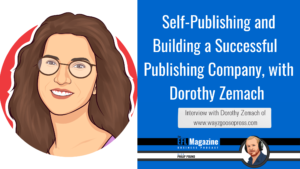How to become a published author
How to become a published author? You’re an ELT teacher and you’ve been teaching now for a number of years. You feel confident in your classroom practice and are starting to wonder what the next step is in terms of your professional development. You’ve used a number of different coursebooks and have also been developing some of your own materials for your classes. When you’ve shared these materials with your colleagues in the school, they’ve really enjoyed using them and have told you how well they work in class.
Does this sound like you?
So now you’re thinking that writing is a direction you’d like to move in, with a view to sharing your work with a wider audience. Publication by an international ELT publisher is appealing but you’re not sure how to go about it.
What are the next steps? Here are some do’s and don’ts …
DO make contact with some publishers
 Look at the books on your shelf. Which are your favourites? Who are the publishers? Start with these. Look at the publishers’ websites and look for information about how to become a writer with them and guidelines for sending in samples or making initial contact. Not all publishers have this information on their website, and if they do, it’s not always up to date. The key information you need is the name and email address of the commissioning editor who commissions materials in the area you are interested in writing for (primary, secondary, exams, methodology, etc.).
Look at the books on your shelf. Which are your favourites? Who are the publishers? Start with these. Look at the publishers’ websites and look for information about how to become a writer with them and guidelines for sending in samples or making initial contact. Not all publishers have this information on their website, and if they do, it’s not always up to date. The key information you need is the name and email address of the commissioning editor who commissions materials in the area you are interested in writing for (primary, secondary, exams, methodology, etc.).
Other ways of getting in touch with the publishers include chatting to people on their stands at conferences to find out more about who the people to contact are, and even phoning up the main offices to find out the names of the relevant people to contact.
DO build a relationship with publishers
Once you’ve established initial contact, get to know the publishers better. Publishers need to know what teachers think of the materials their new publications will be competing with – offer to give feedback on the materials you’re using or have used. Publishers need to understand what the particular requirements are of certain teaching situations – volunteer to participate in focus groups. They need to test their concept and get feedback on sample material – offer to write a reader’s report. And when they publish a new course, they need to promote it at conferences and to teachers’ groups – suggest you give a presentation or talk on their behalf.
DO look out for other opportunities for sharing your materials with a wider audience
Look out for opportunities to share your materials on a wider platform. For example, One Stop English invites writers to share lessons and TeachIT ELT will pay writers whose submissions are successful.
DO join the IATEFL Materials Writing Special Interest Group (MaWSIG) or your local equivalent
Attend events that will introduce you to other writers and publishers. Network as much as possible.
DO raise your profile so publishers get to know your name
Write a blog (or a guest post on someone else’s blog) and be sure to comment on others’ posts about materials writing. The MaWSIG blog is a good place to start.
DO make yourself available where publishers can find you
Set up a profile in the ELT Teacher 2 Writer database, which is used by most of the international ELT publishers, and several local ones to find writers. Reading the ELT Teacher 2 Writer How To … ebooks will also give you added insight into and practical tips on the writing process, and will help you demonstrate to publishers that you are serious about your professional development in materials writing.
DON’T send an entire book manuscript on spec
Publishers work to five-year plans. This means they have detailed publishing plans in place, with associated budgets, resourcing and marketing campaigns. It is VERY rare for a speculative proposal to be commissioned in these days of market-driven publishing.
When you’ve made contact with a publisher and they’ve asked you to send some material in, you need to send a short rationale – who the material is for, what makes it great, how it is different from everything else on the market, and a sample of the material – a unit of the Student’s / Teacher’s / Work book that you’re pitching for.
If you’re sending in a worksheet, make sure you show its USPs. Include teaching notes – think about being sensitive to cultures other than the one you’re teaching in; you won’t be there to teach it, so make sure the material is transparent with really clear rubrics on the student’s page and notes on timings, a full answer key, audioscript, etc, in the teaching notes. Where your material includes photos or artwork, include a short description of what you would like to see on the page in square brackets – don’t spend ages drawing or looking for the perfect photo online.
DON’T plagiarise already published materials
‘Nuff said.
DO listen to the experts
While I was writing this article I asked the MaWSIG community to tell me how they got their first writing break. There are a number of ways in, as you can see from these first-person accounts …
I only ever wanted to be a writer. It was a long time ago, but I got to know some ELT writers, and then one from that circle of friends, Judy Garton-Sprenger, invited me to work on a new FCE course with her. I was so grateful to her, not just because of the chance to write, but because I ended marrying our editor. Partnership is very comforting when you start out. Simon Greenall
I was working for a school where the owners were both authors and they were very supportive and encouraged me and another teacher to stick our necks out and send off our first proposal, which became a resource book for the Making Headway series. Ceri Jones
By sheer luck I got a job writing six graded readers for a Korean based ELT publisher. I saw an opening on the net and applied for it. I had a 3am interview and coincidentally was going to the London Book Fair the next day where I met the head editor. I showed the readers to a wonderful lady, Monica Berlis, who opened the door for me with Pearson. After that more companies took me on and winning the Macmillan Lesson Share and another competition also helped a great deal. Catherine Zgouras
I was doing corpus research for a series of books for CUP (Common Mistakes at …). I just asked if they’d got authors lined up for all of them and if not, could I write one. They agreed to let me write one and it’s still my most profitable bit of writing to date! Julie Moore
I started writing almost as soon as I started teaching. I wrote books for a chain of language schools and for the university where I was EAP curriculum coordinator – and I produced a ton of handouts for my own classes. My big break came the old-fashioned way: I sent a proposal to Pearson Canada. This was after some discussion with the sales rep, who encouraged me (note – get to know the sales people; they know what’s needed). My proposal was well received, and – fast forward a couple of years – Critical Reading was published earlier this year and is doing well. Tania Pattison
I was teaching with Sue Kay when she wrote the Resource Packs for Reward. The original ones were by ‘Sue Kay and the Lake School’ and included a few activities of mine. I then wrote various bits and pieces for Inside Out. Jon Hird
I was approached by a Spanish Publisher (Anaya English) after giving a talk at TESOL Spain about using games in Primary. After doing that OUP saw and liked the book and invited me to write a proposal for them. I still think a lot of commissioning editors find authors at conferences. Katherine Bilsborough
I was inspired by Jill Hadfield’s Communication Games books and put together games for business English. A colleague was at a workshop I gave and told her father who was on the board of an Austrian publisher who then passed it on to another Austrian publisher and Communicative Business Activities was born. Plans now underfoot to update and re-publish. Marjorie Rosenberg
DO some further reading
How ELT Publishing Works is full of tips and advice for anyone interested in finding out more.
DO share your experiences
Use the comments box below.





One Response
Aziz Soubai
Dear Karen, I'm willing to be a professional academic writer and your article is reallly helpful in that regard. Thanks for sharing!
29/05/2016